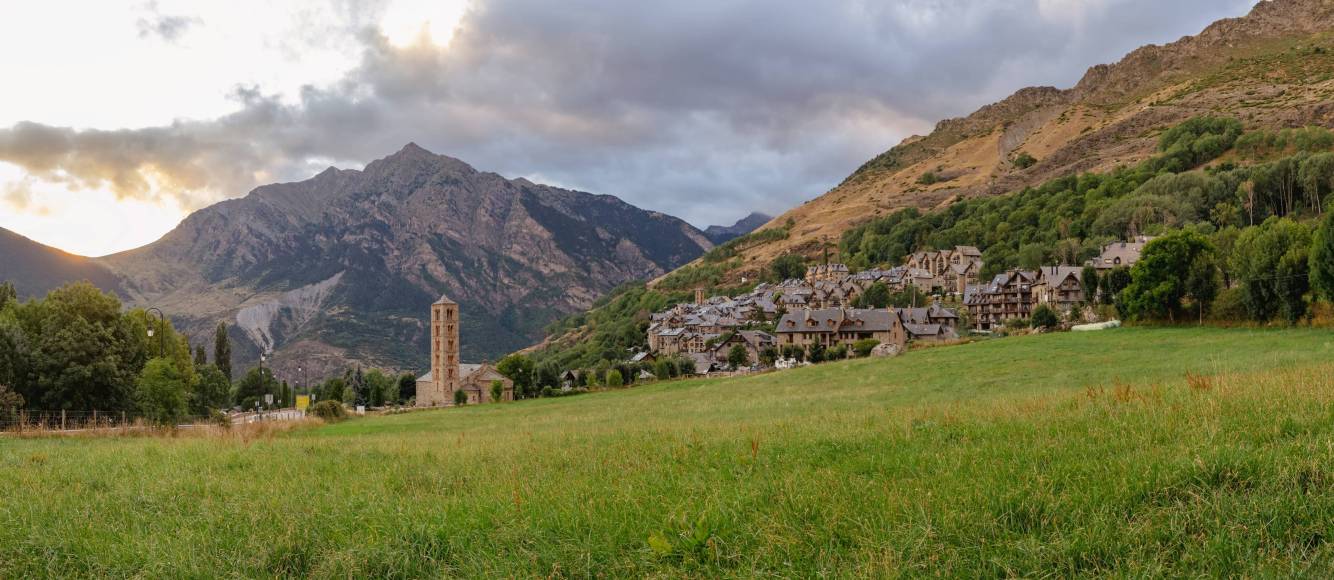The route through the Romanesque churches of the Vall de Boí will lead you to discover the architectural and natural heritage hidden in this small valley of the Pyrenees. If you are one of those people who can't see a Romanesque church without stopping to take a picture (with sepia filter, if possible), this route will make you vibrate more than an electric guitar solo. But be warned: we are not talking about a couple of hidden chapels, but rather of a medieval treasure in the heart of the Pyrenees declared a World Heritage Site by UNESCO. So get ready to walk among millenary stones, restored murals and spectacular bell towers. Welcome to the route of the churches of the Vall de Boí.
The Valley of Boí and its heritage
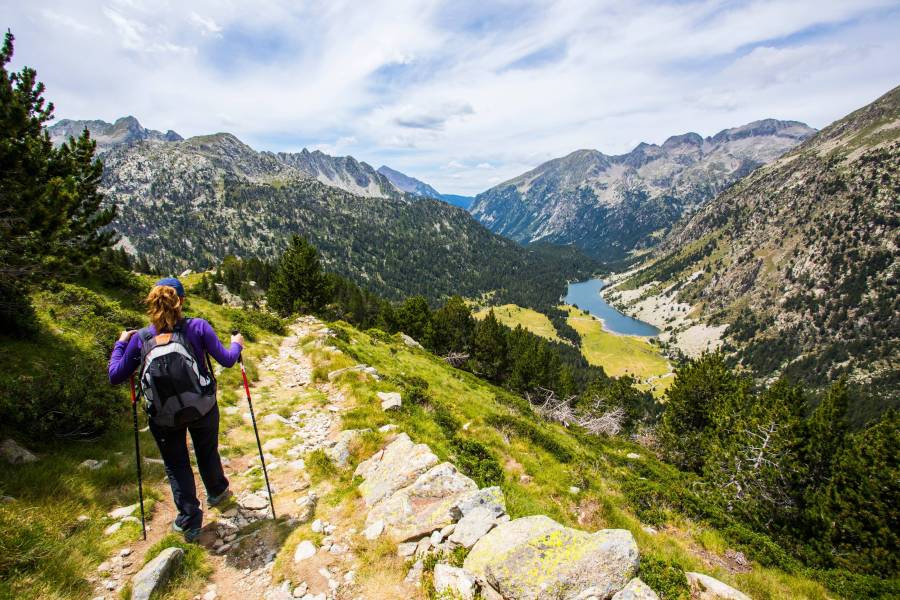
The Boí Valley is not especially large, but it has more Romanesque art per square meter than many European capitals. Located in Alta Ribagorça, in the province of Lleida, amongst mountains that seem straight out of a Tolkien dream, this valley houses eight Romanesque churches and a hermitage, all built between the 11th and 12th centuries. Here you won't find baroque or excessive golden details: the Romanesque of the Boí Valley is austere, elegant and 100% instagrammable. The perfect excuse to combine nature, culture and a bit of trekking.
The most top Romanesque churches in the Boí Valley
1. Sant Climent de Taüll
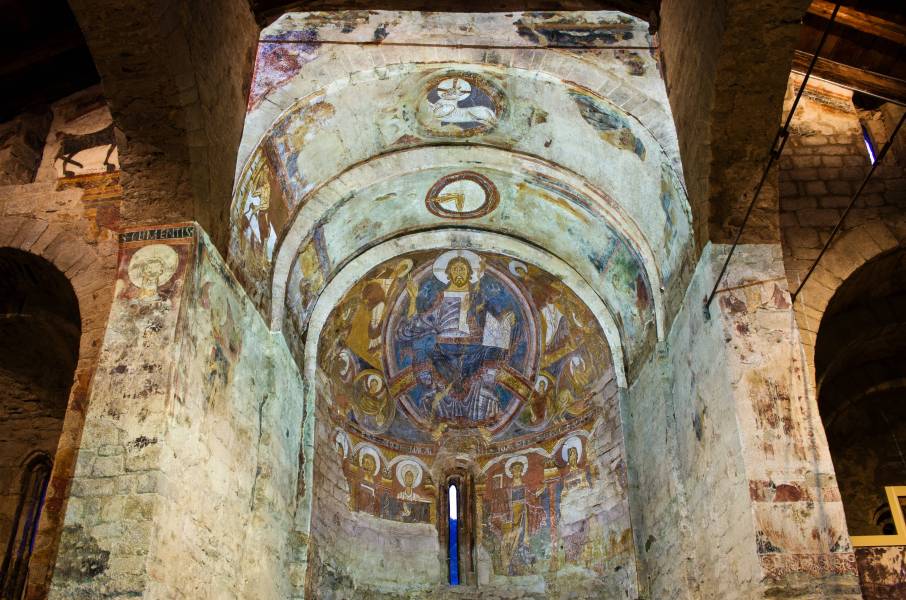
Sant Climent de Taüll is, most likely, the most iconic church of the Catalan Romanesque style. It is the prototype of a Romanesque basilica church, with three naves separated by columns and a wooden, gable-roof, a triple apse and a tower-style bell tower. Inside, the projection of the Christ Pantocrator —a technological marvel that digitally restores the original painting now found in the National Art Museum of Catalonia (MNAC)— envelops you in an immersive experience. You enter searching for history and leave with goosebumps.
2. Santa Maria de Taüll
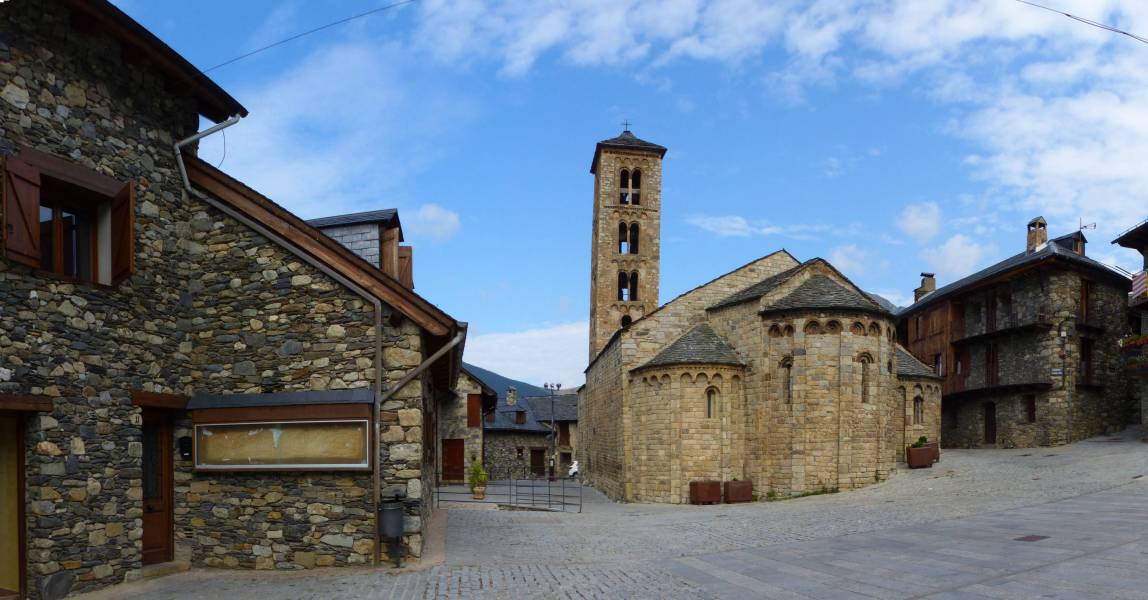
Literally two minutes walk from Sant Climent, Santa Maria's church is smaller but just as captivating. Located in the centre of the village, it is the only church in the valley that seems to generate the settlement around it. Its mural paintings have also been transferred and preserved at the MNAC, but reproductions have been made on site to help understand the original spirit. Don't miss the detail of the carved capitals, the blind arches and the columns.
3. Sant Joan de Boí
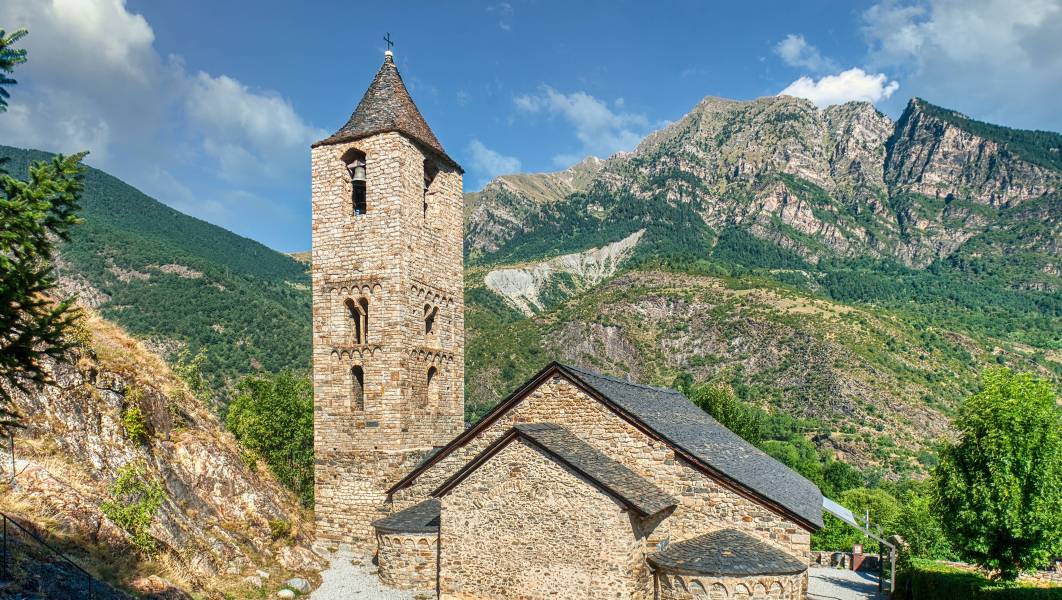
Sant Joan de Boí is the church that preserves the most details and architectural elements from the early Romanesque period that arrived in the Vall in the 11th century. Basilically laid out - like Sant Climent and Santa Maria de Taüll - it's the mural paintings here that will make you open your eyes wide. There is everything: the Stoning of Saint Stephen (spoiler: it doesn't end well), some jugglers who set the pace in the nave, and a bestiary as disturbing as it is fascinating. In the last restoration, they wanted to give the church a look as similar as possible to how it would have been at the beginning of the 12th century; therefore, the interior was plastered and a copy was made of all the fragments of mural painting that are currently preserved in the MNAC. The result? A journey to the past that leaves you wanting more.
4. Santa Eulàlia d'Erill la Vall
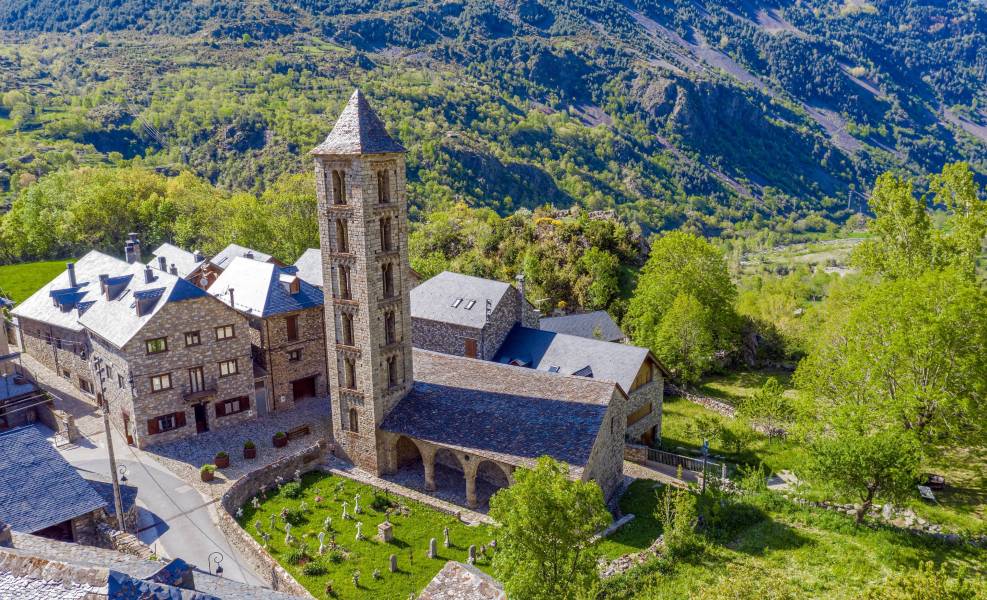
Another of the great hits of Romanesque. In Santa Eulalia, we find one of the most impressive bell towers in the valley, a slender square plant tower with six stories in height, with the own typical decoration of Lombard Romanesque. Inside, everything invites contemplation and admiration. Here the famous Descent from the Cross was found, the only one preserved in its entirety from the Erill Workshop. A polychrome wooden sculpture of great historical and artistic value which can be found at the MNAC and at the Episcopal Museum of Vic. However, the copy that can be seen in the church allows one to understand the strength of this liturgical piece that directly connects with the spirit of the Pyrenean Romanesque.
5. Other essential churches in the Vall de Boí:
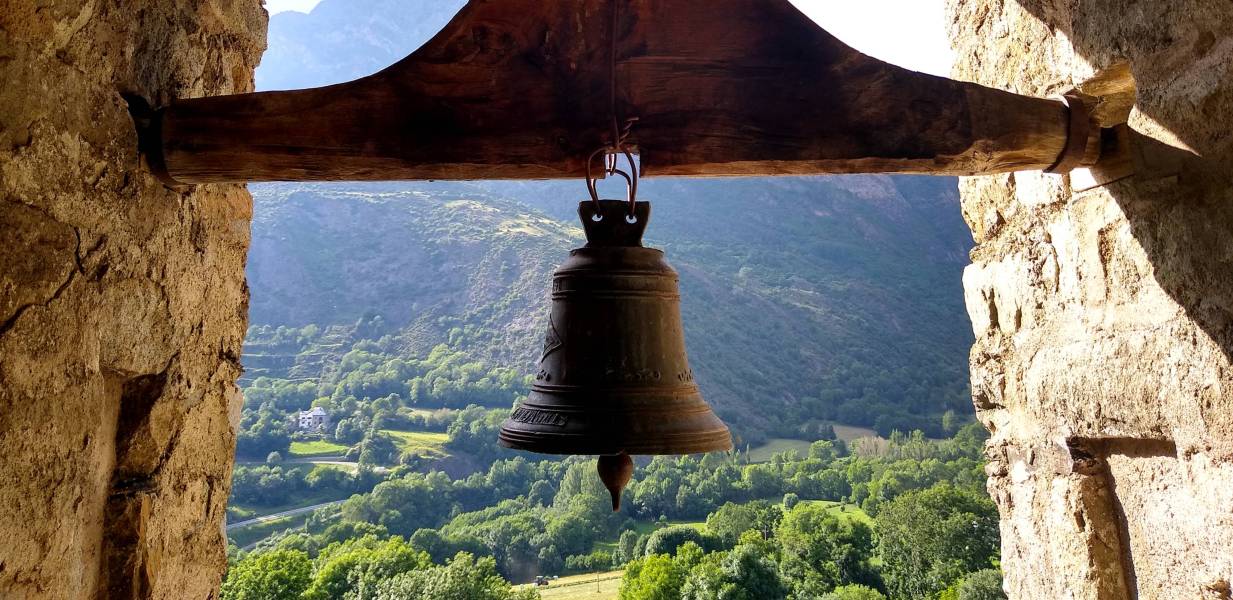
Here comes the all stars moment of the route. Each of these churches has its own character, its own light, and its own legend. Sant Feliu de Barruera, with its simple and robust structure, is surrounded by fields that burst into green in the spring. Nativitat de Durro is one of the highest in altitude and offers breathtaking views of the valley. Also, nearby is the hermitage of Sant Quirc de Durro, an ideal spot for a short but striking hike, with a dizzying panorama. Santa Maria de Cardet preserves one of the most spectacular apses in the valley, and Assumpció de Cóll has its own characteristics that set it apart from other churches in the valley: the building materials, the size of the ashlars, or the decorative elements of the portal, the most interesting part of the temple.
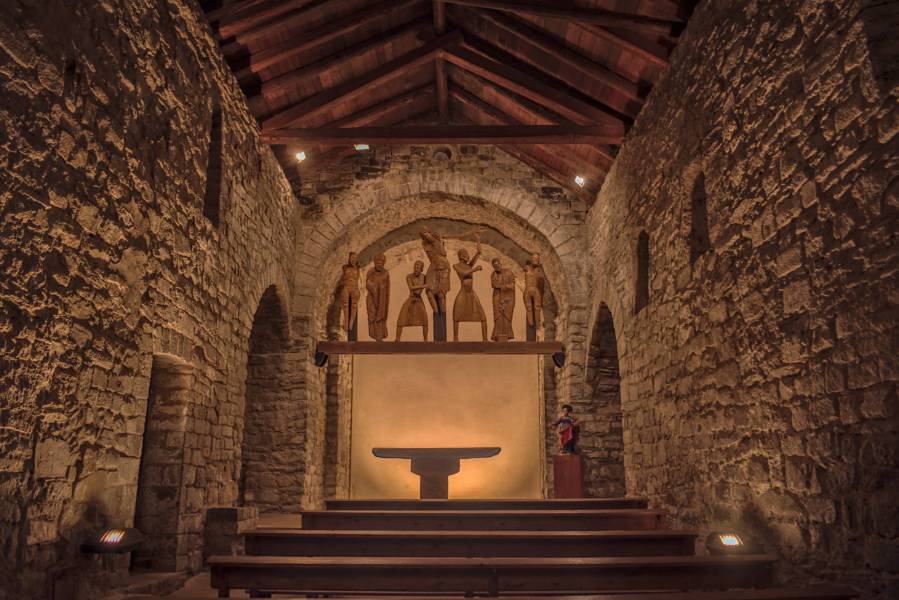
Before leaving the Vall de Boí, don't forget to visit the Romanesque Centre of the Vall de Boí in Erill la Vall, which manages the eight churches and the hermitage that are part of the complex and will help you understand why these churches are so special. They also organize guided tours, workshops and family activities.
The route of the Romanesque churches in the Vall de Boí is much more than an excursion: it's living history, serene beauty and a pride of Catalan heritage. It is the perfect balance between culture and nature. The best part is that it can be done on foot or by car. If you have the time and the legs, there are paths that connect villages and churches, surrounded by meadows, forests and pure air. If you prefer slow travel, we recommend you to look for the best rural house in the province of Lleida and dedicate a long weekend to discover everything calmly. So now you know, prepare your backpack and let yourself be enamoured by the most Romanesque valley in Catalonia.
 Log in to your account
Log in to your account